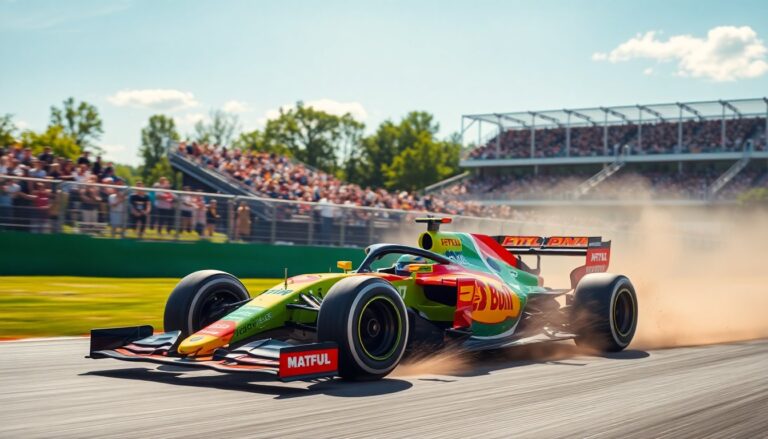Argomenti trattati
Formula 1, widely regarded as the pinnacle of motorsport, has experienced significant changes since its inception in 1950. Initially centered on speed and engineering excellence, the sport is now navigating a critical transition toward sustainability and technological innovation. This evolution aims to enhance the racing experience while addressing urgent environmental challenges.
In recent years, Formula 1 has embraced hybrid technology, positioning itself as a leader in the automotive sector’s shift toward greener practices. This article explores how the sport adapts to modern challenges while preserving its thrilling essence.
Technological advancements in Formula 1
Central to Formula 1’s transformation is the integration of advanced hybrid power units. Introduced in 2014, these units combine traditional combustion engines with energy recovery systems (ERS) that harness kinetic and thermal energy. This innovation not only enhances the efficiency of the cars but also significantly reduces fuel consumption and emissions.
Energy recovery systems explained
The energy recovery system features two main components: the Motor Generator Unit – Kinetic (MGU-K) and the Motor Generator Unit – Heat (MGU-H). The MGU-K captures energy during braking and stores it in the car’s battery, which can then provide an extra boost of power. Meanwhile, the MGU-H recovers energy from exhaust gases, converting it into electrical energy to charge the battery or power the car directly.
The impact on racing performance
This technological leap has not only improved performance but also made races more competitive. Teams continually innovate to extract maximum efficiency from these systems, leading to thrilling on-track battles. The hybrid engines enable drivers to push their limits while maintaining a focus on sustainability, a crucial aspect of modern motorsport.
Formula 1’s commitment to sustainability
As part of its broader sustainability strategy, Formula 1 aims to become a net-zero carbon sport by 2030. This ambitious goal involves several initiatives, including the use of sustainable fuels and reducing travel-related emissions. The sport’s governing body has pledged to explore biofuels and other renewable energy sources to power its cars in the future.
Sustainable fuels and their potential
To meet its environmental goals, Formula 1 actively researches the use of sustainable fuels. These fuels are derived from renewable sources, such as agricultural waste and non-food crops, significantly lowering the carbon footprint associated with racing. By integrating these fuels, Formula 1 can maintain performance levels while contributing to a more sustainable future.
Community engagement and fan experience
In addition to technological advancements and sustainability efforts, Formula 1 recognizes the importance of engaging its fanbase. Initiatives such as the F1 Fan Engagement Program aim to enhance the overall experience for fans, both at the track and through digital platforms. This program offers fans immersive experiences, allowing them to connect with the sport on a deeper level.
Furthermore, Formula 1 is leveraging social media and digital content to reach younger audiences. By creating engaging content that highlights the sport’s commitment to sustainability and innovation, Formula 1 appeals to new fans while fostering a sense of community among existing supporters.
The future of Formula 1
Looking ahead, Formula 1 faces the challenge of balancing its rich heritage with the need for modern innovation. The ongoing integration of technology and sustainability will define the future of the sport, attracting new fans and retaining loyal ones. With its commitment to becoming a net-zero carbon sport, Formula 1 is poised to lead by example in the motorsport world.
In recent years, Formula 1 has embraced hybrid technology, positioning itself as a leader in the automotive sector’s shift toward greener practices. This article explores how the sport adapts to modern challenges while preserving its thrilling essence.0

